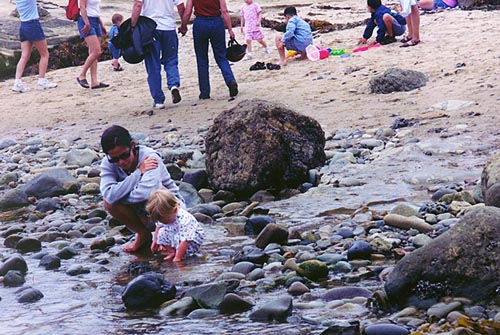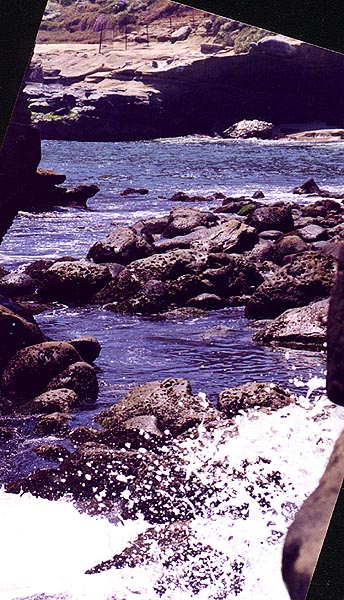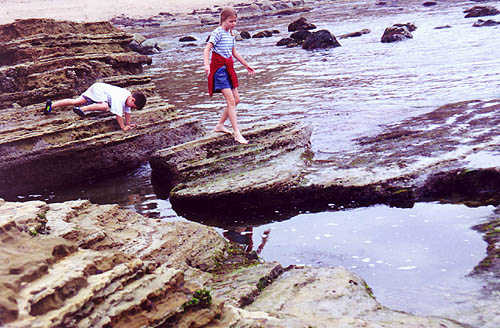


Tides are created by the gravity of the sun and the moon. About twice each day, the ocean swells as the water is pulled away from the center of the earth by these celestial bodies, creating a "high tide" as the water gets deeper near the continents' coasts. In between, low tides result from the oceans' water moving to make high tides elsewhere on earth.
The inter-tidal region is the shore between the low-water mark of the low tide and the high-water mark of the high tide. The land in the inter-tidal region is sometimes underwater and sometimes out of the water.
The rocky coast of Point Loma traps pools of water as the ocean recedes during the low tides. These "tide pools" are homes to many different kinds of plants and animals. Some of the animals, such as Periwinkles, live high above the water and only get wet occasionally. Other animals, such as Wooly Sculpins, live underwater all of their lives. Many other animals have adapted to the tides and live in and out of the water every day.

Because Cabrillo National Monument is so close to San Diego, thousands of visitors explore the Point Loma coasts every year. All these visitors can cause problems for some of the animals of the tide pools if they are not careful. It is important to watch where you step when climbing on the rocks, walking on the shore, and wading in the tidepools. We must be careful so we do not destroy the precious resources of the Point Loma Tide Pools.
See pictures of creatures from the Point Loma Tide Pools in the
ReefNews Photo Gallery, Volume 6:
San Diego Tidal Creatures - Tide Pools and the Inter-Tidal Zone